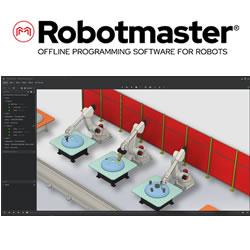Self-folding electronics could enable advanced robotics
ACS Applied Materials & Interfaces: As demand grows for more versatile, advanced robotics and other technologies, the need for components that can enable these applications also increases. Producing such components en masse has been a major challenge. But now, in ACS Applied Materials & Interfaces, researchers report that they have developed a way to help meet this need by printing electronics that can fold themselves into a desired shape.
Creating small electronic pieces with specific architectural designs can now be accomplished with 3-D printing. But the process can be slow, relatively costly and can lead to structural flaws. So scientists have been working on methods to produce flat electronics that fold after they’re printed. But folding the devices into their desired shapes has required additional processing steps or specific conditions such as light exposure or dunking the pieces into liquids, which is not always a good option for electronic products. To address these limitations, Wojciech Matusik, Subramanian Sundaram and colleagues wanted to come up with a more practical approach.
The researchers formulated a new ink containing acrylate monomers and oligomers that can be cured with ultraviolet light. Energy is stored in specific regions of the printed part in the form of residual stress during the printing process. After the flat device is printed and removed from the printer platform, swelling forces cause it to fold itself into a predetermined shape without additional stimulus. The researchers say the development could have applications in robotics and human-machine interfaces. Source:
Comments (0)
This post does not have any comments. Be the first to leave a comment below.
Featured Product

